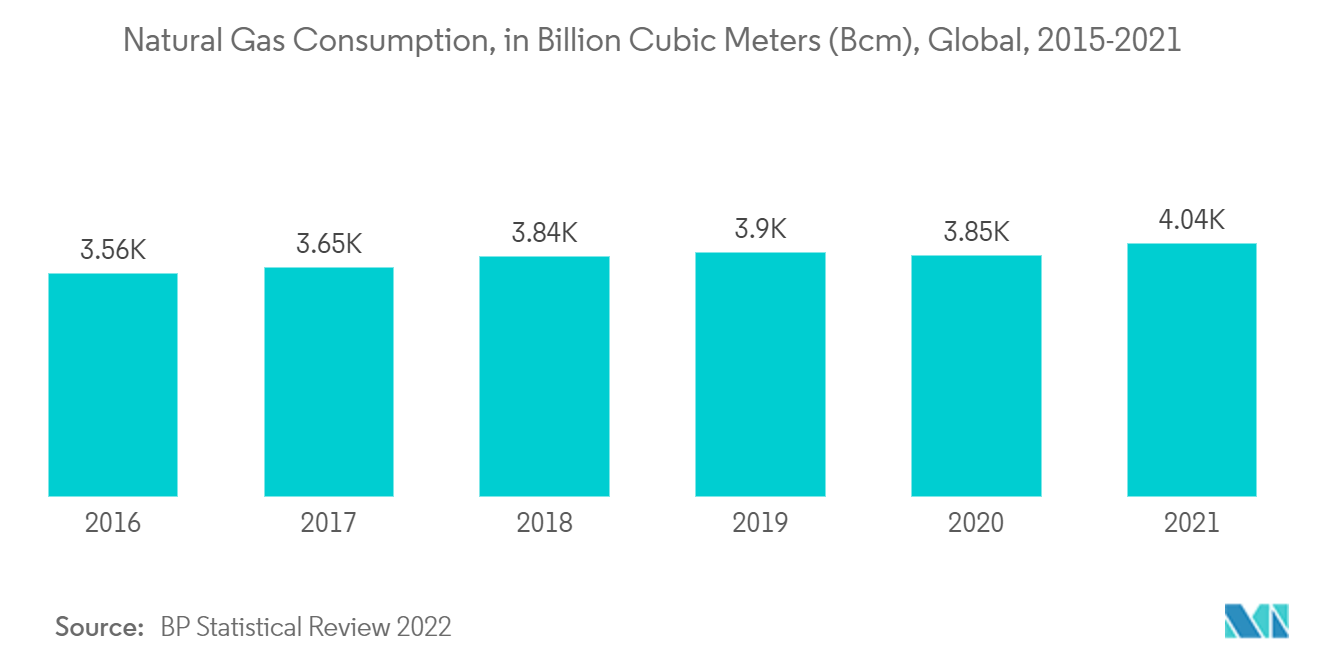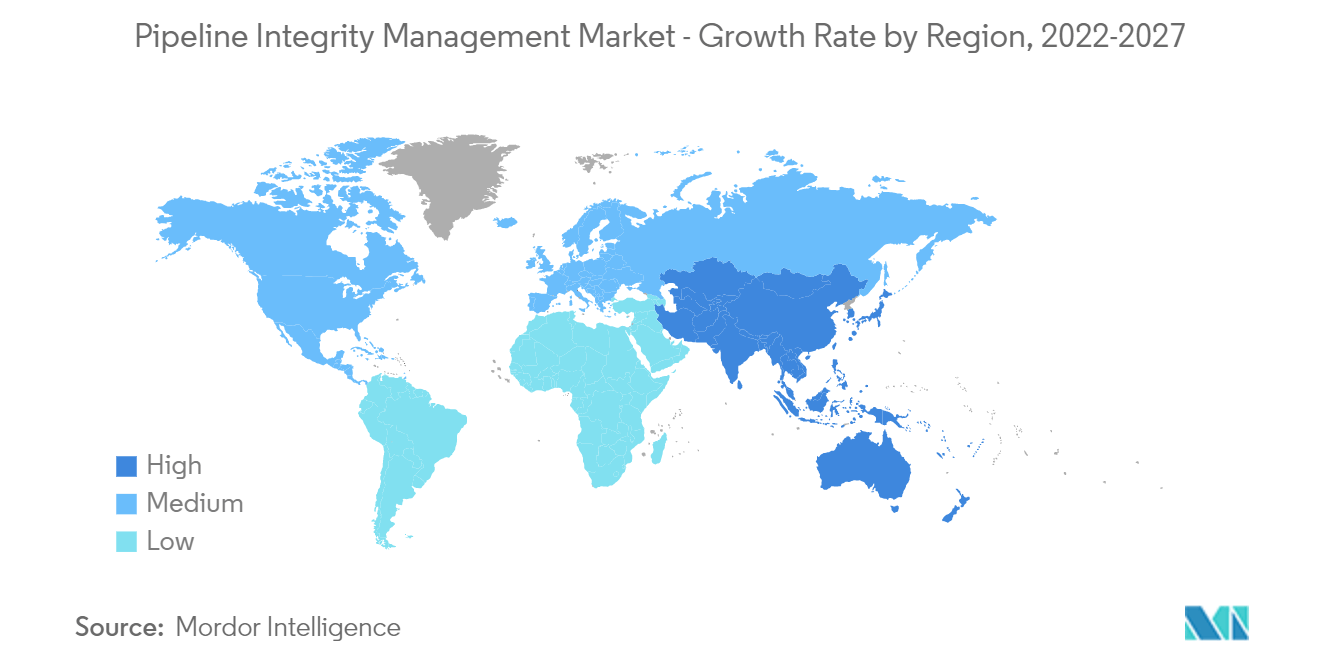Market Trends of Pipeline Integrity Management Industry
This section covers the major market trends shaping the Pipeline Integrity Management Market according to our research experts:
Increasing Demand for Natural Gas Pipeline Infrastructure
- The pipeline is the most economical way of transporting natural gas, crude oil, and petroleum product over a long distance. The consumption of natural gas increased significantly, reaching 3,822.8 billion cubic meters (bcm) in 2020, owing to the increasing demand for natural gas in multiple industries, including power generation and transportation. This trend is expected to continue in the coming years and is likely to drive the gas pipeline infrastructure across various countries.
- Russia continued to be the largest LNG exporter globally, with exports of 197.2 billion cubic meters of gas per year in 2020. The LNG trade is expected to witness a significant increase globally, resulting in increased demand for the natural gas pipeline network as well.
- By 2030, owing to factors such as environmental benefits and the quest for energy security in regions such as Middle East & Africa and Asia-Pacific, the demand for natural gas is expected to witness a significant growth among all fuel types.
- Moreover, in January 2020, the Indian government approved USD 774 million for a natural gas pipeline network in the northeast region as part of a national gas grid being built to span remote locations in the country. The 1,656 km pipeline is expected to cost up to INR 92.65 billion and is expected to be completed by 2023.
- The development of new sources of natural gas, such as shale gas deposits, and the resulting price pressure are increasing the international trade of natural gas. LNG trade is expected to witness a significant increase globally, resulting in an increased demand for natural gas pipeline networks as well, which, in turn, culminates in the growth in the pipeline integrity management market.

Asia-Pacific to Dominate the Market
- The energy consumption in Asia-Pacific is expected to increase by up to 48% by 2050. According to the International Energy Agency (IEA), China is expected to contribute 30% of the world's energy increase until 2025. Moreover, natural gas imports have been continuously rising in China and reached 138.371 bcm in 2020, thus, meeting the increasing domestic demand.
- China's state-owned firms, including CNPC and China National Offshore Oil Corporation, have plans to maximize production at local gas fields, further driving the pipeline demand in the region.
- India is also modifying its gas pipeline infrastructure to meet the growing demand. In the annual budget for 2021, the Indian government announced a pipeline project for the union territory of Jammu and Kashmir. Apart from this, the nation aims to increase the natural gas share to 15% in the energy basket and expects USD 66 billion investment in building the gas infrastructure, including gas pipeline, CGD, and LNG regasification terminals.
- Moreover, in December 2020, the Indian government announced a USD 60 billion investment for creating gas pipeline infrastructure, which covers the expansion of Compressed Natural Gas pipeline networks (CGD) in 232 geographical areas across the country by 2024.
- In China, investment in the pipeline sector has gained momentum after the shale gas boom. Therefore, this has further increased the need for sophisticated pipeline networks, calling for efficient operation and maintenance. However, corrosion of pipelines remains a significant challenge for pipeline operators. This, in turn, culminates as a good opportunity for the growth of the Pipeline Integrity Management Market in the forecast period.


